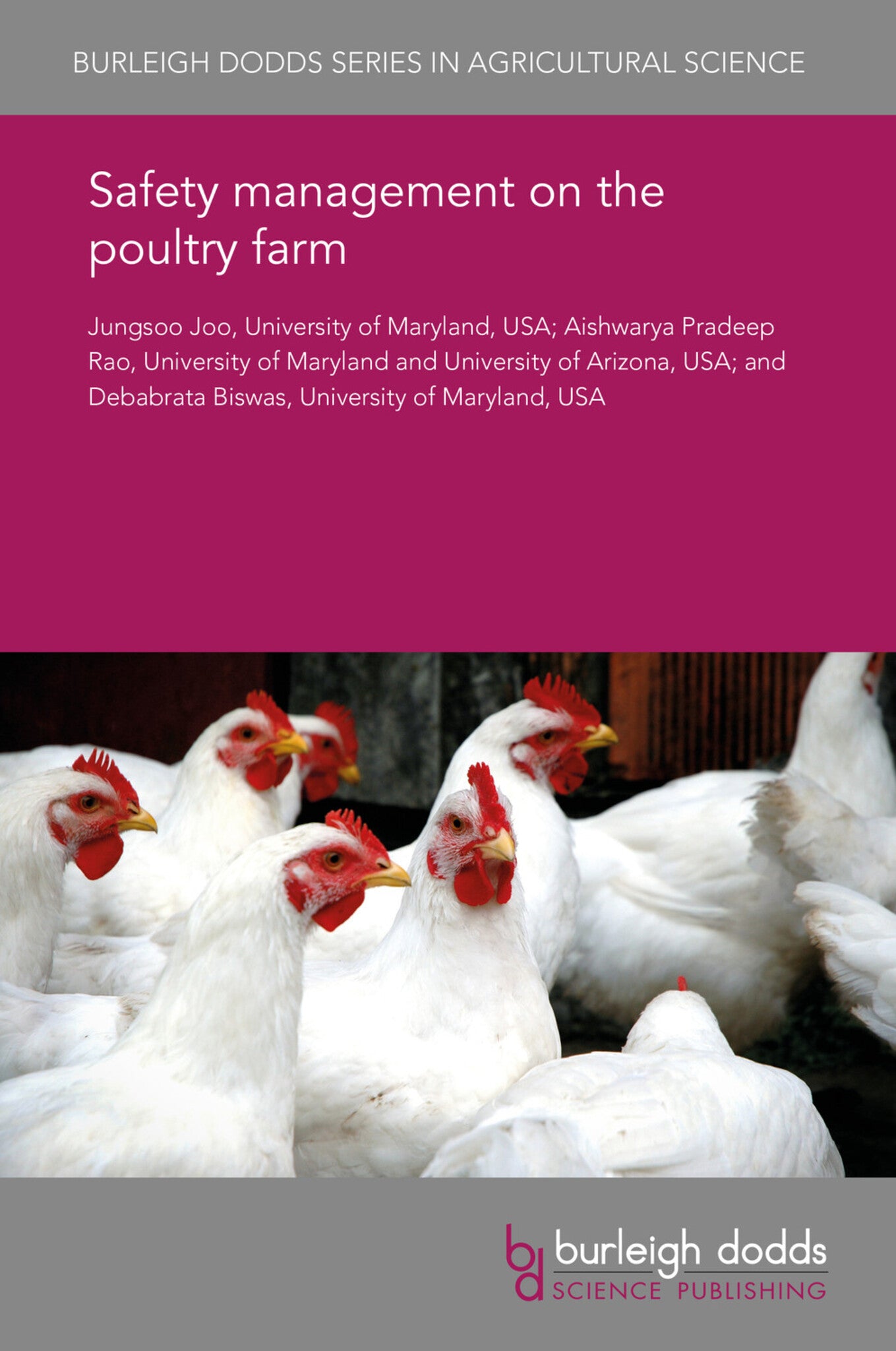We're sorry. An error has occurred
Please cancel or retry.
Safety management on the poultry farm
Regular price
£25.00
Sale price
£25.00
Regular price
£25.00
Unit price
/
per
Sale
Sold out
Re-stocking soon
Transmission and colonization of poultry pathogens and infectious diseases can be controlled, and the colonization of major zoonotic pathogens in the poultry can be minimized, through better farm s...
Read More

Some error occured while loading the Quick View. Please close the Quick View and try reloading the page.
Couldn't load pickup availability
- Format:
-
25 November 2016

Transmission and colonization of poultry pathogens and infectious diseases can be controlled, and the colonization of major zoonotic pathogens in the poultry can be minimized, through better farm safety management, phytosanitary measures and a pre-harvest Hazard Analysis and Critical Control Point (HACCP) system. Such safety management practice can also significantly reduce food safety challenges that are present during post-harvest processing and packaging, improve the microbial quality of poultry products, better protect consumer health and mitigate environmental contamination. Appropriate control of pest and wildlife infiltration and a well-designed, low-stress environment are fundamental to maintaining optimal flock health. Safety training and education of breeders, farmers, suppliers and workers are essential to produce healthy birds while ensuring that poultry farming remains sustainable and economical.

Price: £25.00
Publisher: Burleigh Dodds Science Publishing
Imprint: Burleigh Dodds Science Publishing
Series: Burleigh Dodds Series in Agricultural Science
Publication Date:
25 November 2016
ISBN: 9781838791834
Format: eBook
BISACs:
TECHNOLOGY & ENGINEERING / Agriculture / Sustainable Agriculture, Poultry farming, TECHNOLOGY & ENGINEERING / Agriculture / Animal Husbandry, Sustainable agriculture

1 Introduction 2 Safety practice in hatching and transport of chicks, sources and breeders 3 Farm safety issues and recommendations for managers 4 Farm biosecurity management 5 Regulatory acts, enforcement and monitoring 6 Conclusions 7 Where to look for further information 8 Acknowledgements 9 References



